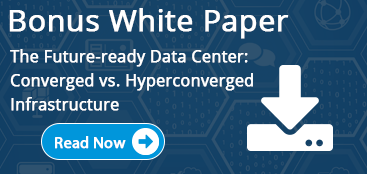Hyperconverged infrastructure benefits are clear, as is the trend toward mainstream enterprise adoption. However, not all  companies are on board with this new type of software-driven data center innovation. Because of technical and licensing challenges, larger companies are quicker to make the adoption than smaller businesses. The three main organizational groups that can really benefit from this technology are:
companies are on board with this new type of software-driven data center innovation. Because of technical and licensing challenges, larger companies are quicker to make the adoption than smaller businesses. The three main organizational groups that can really benefit from this technology are:
- Employees reap the reward of IT service delivery on demand
- Developers gain a scalable, reliable platform to support application development and testing
- Enterprise operations see economic benefits in the form of increased operational output with a reduction in operational costs
7 Challenges of Hyperconvergence
When first released, one of the primary barriers to hyperconvergence adoption was in the form of scalability. Hyperconvergence wsa not developed enough to be proven to provide the full scalability that converged infrastructure could provide. Now, scalability is one of the strengths and primary benefits of hyperconverged infrastructure. Secondly, there's a barrier in the form of cultural resistance to change, or fear of making a costly mistake. This can be solved with proper collaboration in the boardroom by developing an IT infrastructure strategy that aligns with business initiatives. The next step is to evaluate existing technical skills within the IT organization, appointing roles and fully communicating all steps of the implementation process. Any IT leader who is trying to transform their IT organization will agree those aforementioned steps are not always easy to accomplish. Even though hyperconvergence technology is trending towards becoming a mainstream, accepted infrastructure approach, it is not yet at the point of wide-scale adoption that some businesses might prefer before making the investment. [click to tweet]
According to Gartner’s Data Center Conference Poll, the seven main challenge areas for companies to provide IT as a Service are:
- Management and operations processes – 80%
- Funding/chargeback model – 62%
- Company culture – 56%
- Service description and self-service interface – 46%
- Company politics – 40%
- Technology – 36%
- Business/customer relationship – 31%
Hyperconverged Infrastructure can be a big change for IT managers and directors versed in more traditional infrastructure deployments. With specific IT resources focused on tasks like storage, networks or server administration, the idea of marrying these disciplines can make some IT professionals’ heads spin.
How to Measure the Success of Hyperconvergence
No IT investment is made lightly, and all investments need to be cost justified in order to make sure they deliver both short- and long-term value. Hyperconverged systems are no exception. One of the biggest enterprise gains is the fact that it can transform an inflexible infrastructure into a fluid pool of resources that can be delivered in a more automated and orchestrated manner.
Did you know that 66% of organizations already have moved or are planning to move to a hyperconverged infrastructure solution?1
With hyperconvergence, the data center becomes more proactive instead of reactive because the infrastructure is in place to respond to requests for IT resources before the requests are made. [click to tweet] This saves time and money, and mitigates service delivery delays, as well as missed market or sales opportunities. Consider the time it takes to provision a physical machine: with traditional IT it could take hours or weeks, but with hyperconverged infrastructure that same task is possible in five to fifteen minutes.
Converged vs. Hyperconverged
How can you determine if converged or hyperconverged infrastructure is right for your organization? Here is an overview of the differences:
| Converged | Hyperconverged | |
| Cost | Pay up front | Pay as you go |
| Management | Complex | Simple |
| Scalability | Highly scalable / scale-up | Highly scalable / modular |
| Resources | Single pool | Fluid pools |
| Configuration | Hardware-defined | Software-defined |
| Time to value | Moderate | Fast |
5 Key Questions to Ask Before Investing in Hyperconvergence
Like all business decisions, it’s important to fully prepare yourself before making an investment. These five questions can help steer your decision.
- What is my organization’s budget?
- What are my scalability requirements?
- Am I ready to move toward software defined data center?
- Do I need my solution to integrate with a legacy environment or can it stand alone?
- Do I have enough IT staff to manage this solution?
Hyperconverged infrastructure can bring your business all kinds of IT benefits. We have experience with the industry’s leading hyperconverged systems -- contact us today for a demo and advice on how to select, and deploy, the right solution for your organization.
Next Steps: Learn more about how to leverage a hyperconverged infrastructure strategy in your data center by reading our white paper, "The Future-ready Data Center: Converged vs. Hyperconverged Infrastructure."
Sources:
1. IDG Research commissioned by WEI. November, 28, 2017.
2: Image credit: iStockphoto/Petrovich9 via TechRebulic













